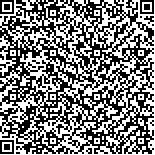|
| 引用本文: | 牟红莉,王瑞旋,王俊,林小植,王江勇.微塑料对近江牡蛎免疫力的影响[J].海洋科学,2023,47(9):53-60. |
| |
|
| |
|
|
| 本文已被:浏览 470次 下载 426次 |

码上扫一扫! |
|
|
| 微塑料对近江牡蛎免疫力的影响 |
|
牟红莉1,2, 王瑞旋3, 王俊4, 林小植3, 王江勇5
|
|
1.上海海洋大学 海洋科学学院, 上海 201306;2.中国水产科学研究院南海水产研究所/农业农村部南海渔业资源开发利用重点实验室, 广东 广州 510300;3.韩山师范学院, 广东 潮州 521041;4.华南农业大学, 广东 广州 510642;5.惠州学院, 广东 惠州 516007
|
|
| 摘要: |
| 为探究微塑料对牡蛎免疫力的影响, 该研究对近江牡蛎(平均壳长: 6.6 cm)采用壳内推注的方式注入不同浓度的聚苯乙烯微塑料(0.05、0.5、5 mg·L-1, 以无菌生理盐水为稀释液), 分别胁迫24 h、48 h和72 h后, 检测分析牡蛎鳃组织的免疫指标(碱性磷酸酶(AKP)、超氧化物歧化酶(SOD)、丙二醛(MDA)、过氧化氢酶(CAT)、一氧化氮合成酶(NOS)和乙酰胆碱酯酶(AChE))的变化。结果显示, 在胁迫24 h后, 微塑料浓度对AKP的活力有显著影响(P<0.05)。SOD、AKP和结构型一氧化氮合成酶的活性呈现明显的先升后降的趋势。在胁迫48 h后, 微塑料浓度上升导致A-chE活力显著下降(P<0.05), CAT、SOD和AKP呈现先升后降的趋势。在胁迫72 h后, 微塑料浓度的升高, AKP和AChE的活力呈现先降后升的趋势, 而SOD、CAT和诱导型一氧化氮合成酶的活力与之呈现相反的趋势, 显示先升后降的趋势。随时间和浓度的增长, MDA处于一直上升的趋势。以上结果表明, 微塑料可使牡蛎产生免疫应激反应, 且胁迫时间越长, 牡蛎免疫应激反应越剧烈。 |
| 关键词: 近江牡蛎 微塑料 酶活力 免疫指标 |
| DOI:10.11759/hykx20210810002 |
| 分类号: |
| 基金项目:国家自然科学基金项目 (31902416); 水生细菌的耐药性传递规律及主要机制研究(2022ZDX4029); 水生弧菌多重耐药性的传递机制研究(2021ZDJS041) |
|
| Effect of polystyrene microplastics on oyster immunity |
|
MOU Hong-li1,2, WANG Rui-xuan3, WANG Jun4, LIN Xiao-zhi3, WANG Jiang-yong5
|
|
1.Shanghai Ocean University, College of Marine Science, Shanghai 201306, China;2.South China Sea Fisheries Research Institute, Chinese Academy of Fishery Sciences/Key Laboratory of South China Sea Fishery Resources Exploitation & Utilization, Ministry of Agriculture and Rural Affairs, Guangzhou 510300, China;3.Hanshan Normal University, Chaozhou 521041, China;4.South China Agricultural University, Guangzhou 510642, China;5.Huizhou University, Huizhou 516007, China
|
| Abstract: |
| We aimed to study the effect of microplastics on oyster immunity by injecting oysters (average shell length: 6.6 cm) with different concentrations of polystyrene microplastics (0.05, 0.5, and 5 mg·L-1, with sterilized saline water as diluent) via intrashell injection (without damaging the soft tissue of oyster). The gills were sampled at 24, 48, and 72 h, respectively, and the activities of six immune-related indices, including alkaline phosphatase (AKP), superoxide dismutase (SOD), malondialdehyde (MDA), catalase (CAT), nitric oxide synthase (NOS), and acetylcholinesterase (AChE), were determined. After 24 h of treatment, the concentration of microplastics had a significant effect on gill AKP activity in the oysters (P<0.05). AKP, SOD, and structural NOS initially increased and subsequently decreased. After 48 h of treatment, increasing the microplastic concentration led to a significant decrease in AChE activity (P<0.05), and CAT, SOD, and AKP initially increased and subsequently decreased. After 72 h of microplastic exposure, the activities of AKP and AChE initially decreased and then increased with an increase in microplastic concentration, whereas the activities of SOD, CAT, and inducible NOS initially increased and subsequently decreased. The MDA content increased with time and concentration of microplastics. These results show that microplastics induce an immune stress response in oysters, and longer stress time causes a more intense immune stress response. |
| Key words: oyster microplastics enzyme activity immune index |
|
|
|
|
|
|
